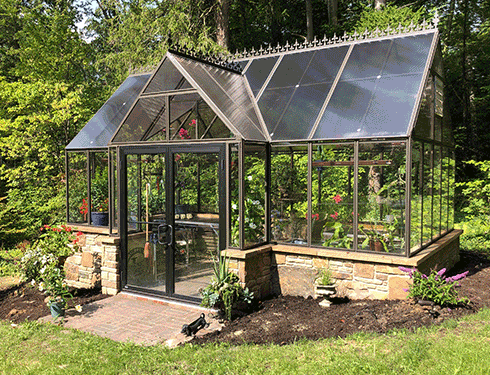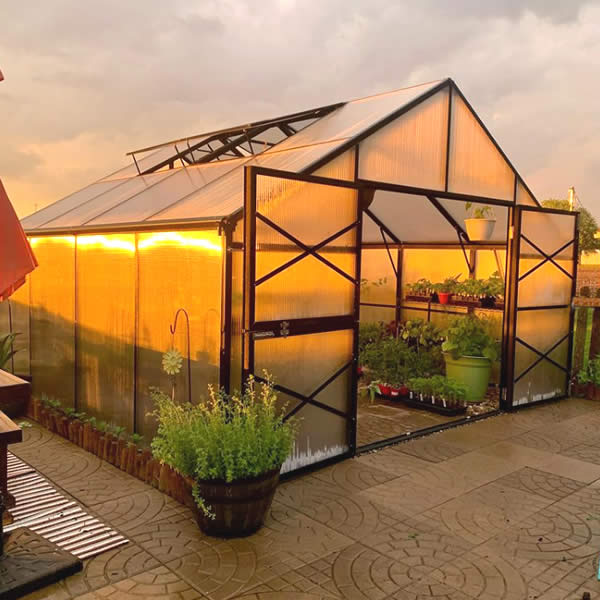Residential Oasis: Monarch Residential Greenhouse Utah Haven for Plants
Wiki Article
The Future of Greenhouses: Developments in Lasting Agriculture
Are you interested regarding the future of greenhouses and exactly how they are transforming lasting agriculture? From sophisticated environment control systems to upright farming strategies, water-efficient watering approaches, renewable power assimilation, and wise information analytics, these innovations are changing the means we expand our food.Advanced Environment Control Equipment
To attain optimum expanding problems, you can depend on the innovations in greenhouses with innovative environment control systems. These systems have actually changed the means we grow crops, offering a controlled environment that contributes to plant development. With these cutting-edge systems, you can currently control temperature, humidity, light degrees, and also CO2 concentrations to create the excellent problems for your plants to flourish.One of the key attributes of these innovative climate control systems is their ability to regulate temperature level. By utilizing sensors and automated controls, the greenhouse can adjust the temperature level based on the particular needs of the plants. This makes certain that they are never ever exposed to severe warm or cold, which can be detrimental to their development.
Humidity control is another essential aspect of these systems. By keeping the suitable humidity levels, you can protect against problems such as mold, mold, and illness from affecting your plants. These systems can also regulate the quantity of light that reaches the plants, ensuring that they obtain the ideal amount for photosynthesis.
Additionally, advanced climate control systems can also control CO2 focus. By raising the degrees of carbon dioxide in the greenhouse, you can boost plant growth and performance. This is especially beneficial in areas with reduced all-natural CO2 degrees.
Upright Farming Methods
One important vertical farming strategy is using piled expanding systems. Monarch Residential Greenhouse Utah. These systems entail arranging plants in several layers, up and down piled on top of each other. By using upright room, farmers can optimize their crop yield without calling for additional land. Stacked growing systems are frequently used in urban areas where room is restricted.One prominent approach is called vertical hydroponics, where plants are grown in nutrient-rich water without soil. This method is very reliable as it reduces water usage by approximately 90% contrasted to traditional farming techniques. In addition, because the plants are grown inside your home, they are protected from insects and illness, lowering the need for pesticides.
Another technique is aeroponics, which involves suspending the plant roots in a mist or air environment. This method permits ideal nutrient absorption and oxygenation, leading to faster growth and higher returns. Aeroponics additionally utilizes less water than conventional farming and can be executed in vertical systems, making it a popular choice for upright farming.
Water-efficient Watering Techniques
When it comes to executing water-efficient irrigation approaches in lasting agriculture,Making the most of water conservation is crucial. With international water shortage becoming a pushing problem, it is crucial to create ingenious techniques that maximize water usage in greenhouse operations.One appealing method is drip watering, which delivers water straight to the plant roots, minimizing waste and dissipation. By using a her explanation network of tubes with tiny emitters, water is applied gradually and precisely, making certain that plants get the essential wetness without excess drainage.
One more reliable method is making use of soil dampness sensors. These tools measure the dampness content in the dirt and offer real-time information to farmers. By checking the soil's wetness degrees, farmers can precisely determine when and exactly how much water to apply, protecting against over-irrigation.
Additionally, the application of rainwater harvesting systems is obtaining appeal in greenhouse agriculture. Accumulating rainwater from roofs and storing it in tanks permits farmers to utilize this natural resource for watering purposes, liquid lawn lowering reliance on typical water resources.
Finally, the adoption of automated irrigation systems can substantially improve water effectiveness. These systems use sensors to detect dirt dampness levels and climate condition, readjusting irrigation routines as necessary. By optimizing water use based on real plant demands, these systems can reduce water waste and advertise sustainable farming techniques.
Renewable Energy Assimilation
Sustainable energy integration in greenhouses uses several advantages, consisting of decreased operating prices and lowered reliance on non-renewable energy resources. The created power can then be utilized to run various procedures within the greenhouse, such as home heating, illumination, and ventilation systems. These generators harness wind power and transform it into electrical power, which can be utilized to supplement the energy needs of the greenhouse.Smart Data Analytics and Automation
To enhance the efficiency of your greenhouse operations and optimize source usage, take into consideration executing best oscillating sprinkler smart data analytics and automation. Smart information analytics involves gathering and assessing data from different sensors and gadgets within your greenhouse.
Automation, on the various other hand, includes utilizing modern technology to automate jobs that were previously done manually. This can consist of automating the control of illumination, air flow, watering systems, and nutrient distribution. By automating these procedures, you can ensure that your plants obtain the appropriate conditions and nutrients at the appropriate time, without the demand for continuous hand-operated treatment. This not just conserves you effort and time but also decreases the risk of human error.
Furthermore, clever information analytics and automation can interact synergistically. The data gathered by sensors can be used to educate computerized systems, enabling them to make real-time modifications based on the current problems. This assimilation of data analytics and automation can result in more reliable and accurate resource appropriation, inevitably leading to higher returns and much better crop quality.
Verdict
In final thought, the future of greenhouses in sustainable farming looks appealing. With advanced environment control systems, vertical farming strategies, water-efficient irrigation techniques, and eco-friendly energy assimilation, greenhouses are becoming more eco friendly and reliable. Furthermore, using smart data analytics and automation additionally improves productivity and minimizes waste. These advancements are paving the means for a more reliable and sustainable farming industry, making certain a greener and healthier future for all.
By enhancing water usage based on actual plant requirements, these systems can lower water waste and advertise lasting farming techniques.

Report this wiki page